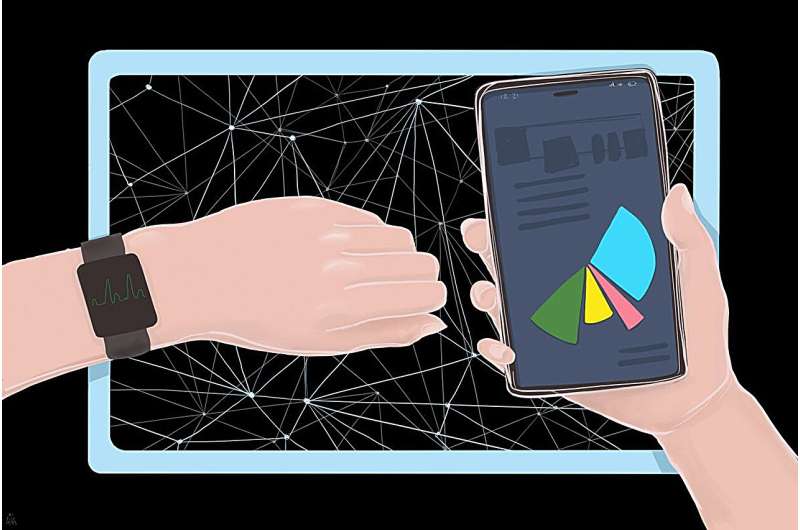This article has been reviewed according to Science X's editorial process and policies. Editors have highlighted the following attributes while ensuring the content's credibility:
fact-checked
trusted source
proofread
Research shows that smartwatch and clinical testing measures differ

At a time when usage of smartwatches and rings has become more common, a West Virginia University human performance researcher points out that the heart rate variability—the time between heartbeats—the devices report is different from what would be recorded in a clinical setting.
"Heart rate variability has been used for nearly 100 years as a non-invasive measure of the autonomic nervous system, having been linked to overall mortality, cardiovascular health and stress," said Matt Tenan, program director for Human Performance Research and Data Science at the WVU Rockefeller Neuroscience Institute. "Consumer wearables are reporting heart rate variability data and metrics that previously you would only get in the hospital and a lab setting, but they're recording them differently."
Wearables operate with photoplethysmography, or PPG, a technology that shines a light into the skin and produces a reflection of the blood moving just below the finger or wrist to record heart rate. In a hospital, an electrocardiography—ECG or EKG—machine measures the heart's electrical activity through electrodes placed on the body.
"You're looking at two things, one is blood flow and the other is the electrical signal of the heart," Tenan said.
Clinicians and medical scientists are interested in heart rate variability because it's a biomarker for a patient's general systemic health. Tenan said even if people don't pay particular attention to the measure on their wearable, it still plays a part in their overall wellness picture indicated on the device.
"A lot of these devices will give something called a readiness score or a sleep score and one of the primary components of these is the heart rate variability measure," he explained. "People look at these scores to see how they're doing overall, whether their fitness has improved, that sort of thing. But, if a composite is full of a measure that's biased, how accurate is it going to be?"
Tenan and colleagues from the WVU Rockefeller Neuroscience Institute and WVU School of Medicine Department of Exercise Physiology conducted a study to determine the validity of the wearable measures for heart rate variability. Their work is published in the journal Sports Medicine.
Since the wearables measure the pulse instead of the heart's electrical signals, Tenan and his team used data from previous research to conduct a simulation analysis of the process involved when blood moves from the heart to the finger or wrist.
"There's a lot going on between when the heart beats and when the blood gets all the way to the arm or wrist, what's called pulse arrival time," Tenan explained. "By simulating that and knowing what's happening at the heart, we determined what's being measured with the consumer wearable is different. It's not to say the consumer wearable is bad or not useful, it's just not the same."
To conduct the study, researchers collaborated with the cardiovascular lab at the University of Waterloo in Ontario, Canada.
The study also found that not all wearables are created equally when it comes to the calculations they use to record health measurements.
Researchers found that the method Apple uses, standard deviation of normal-to-normal, or SDNN, is the most accurate. Other brands implement a system called root mean square standard deviation, RMSSD, which Tenan said produces a wider range of error in the measurement.
He said he hopes the study encourages manufacturers of wearables to consider switching their calculations to SDNN.
"I don't fundamentally see any reason why any of the wearable companies should be using the RMSSD measure," Tenan said.
Findings from the study can be used to build machine learning algorithms for wearables and other similar devices that monitor people's health in their everyday settings.
Tenan said he anticipates doing future research on consumer grade wearables: "It will probably be less analytical work and more clinical that will involve working with patients."
More information: Hayden G. Dewig et al, Are Wearable Photoplethysmogram-Based Heart Rate Variability Measures Equivalent to Electrocardiogram? A Simulation Study, Sports Medicine (2024). DOI: 10.1007/s40279-024-02066-5




















